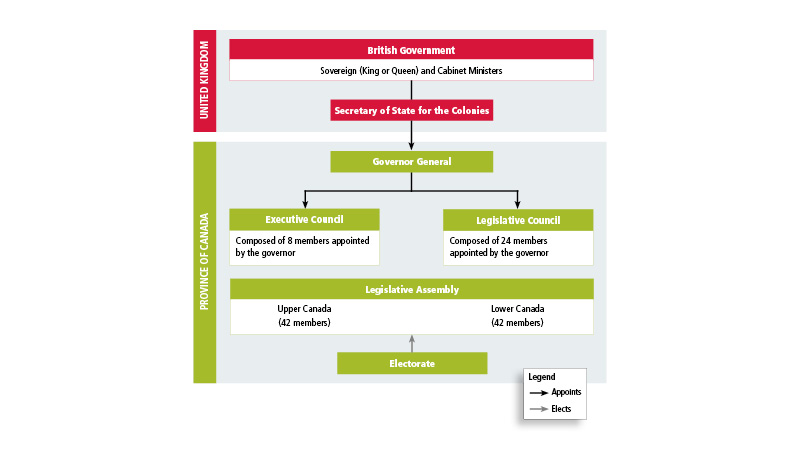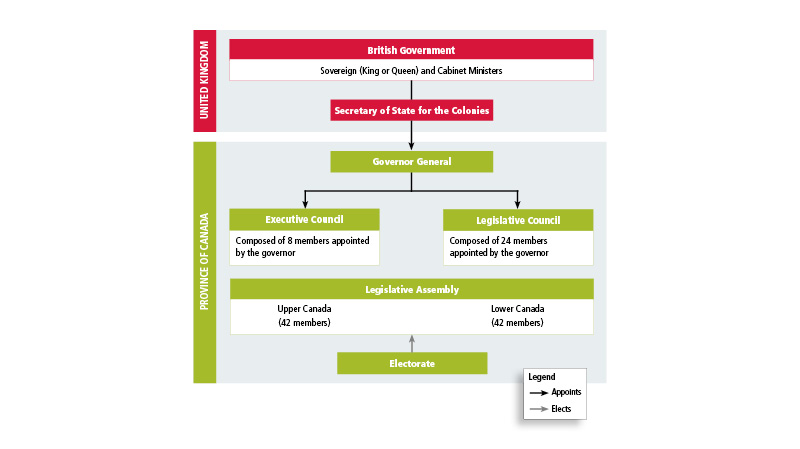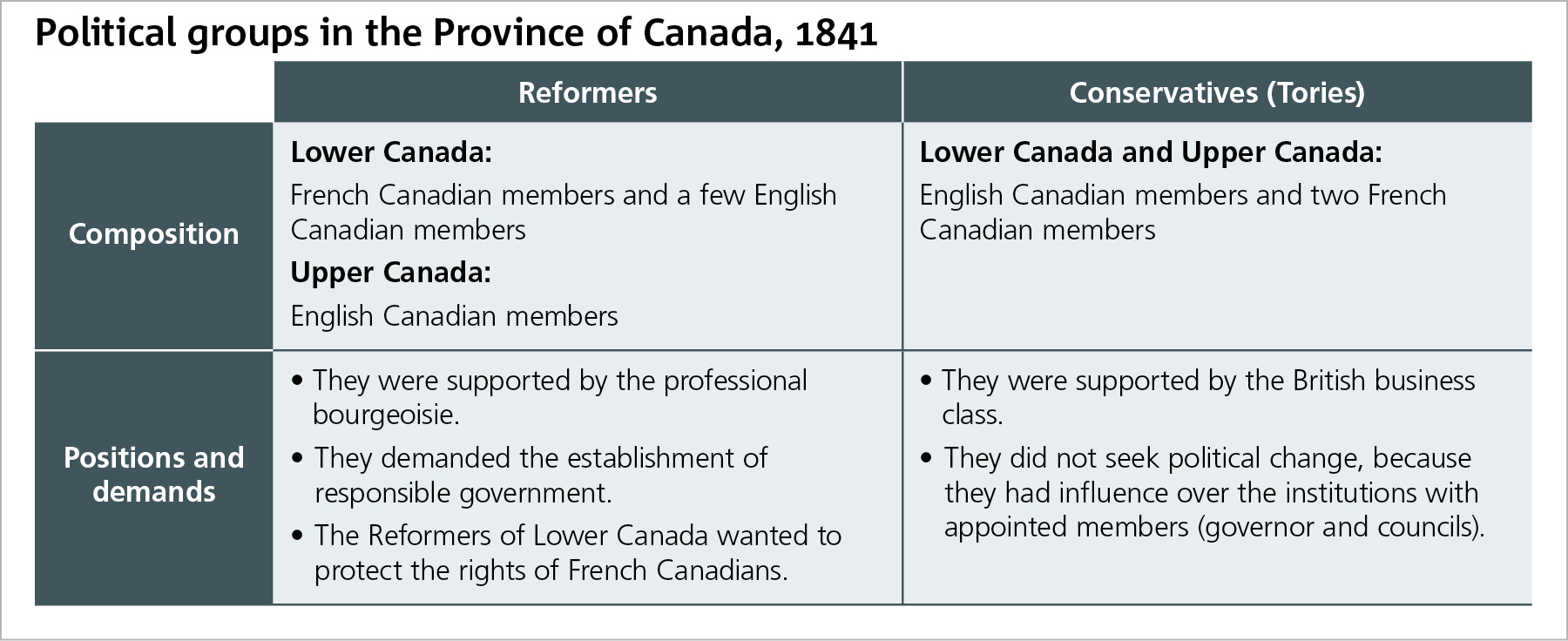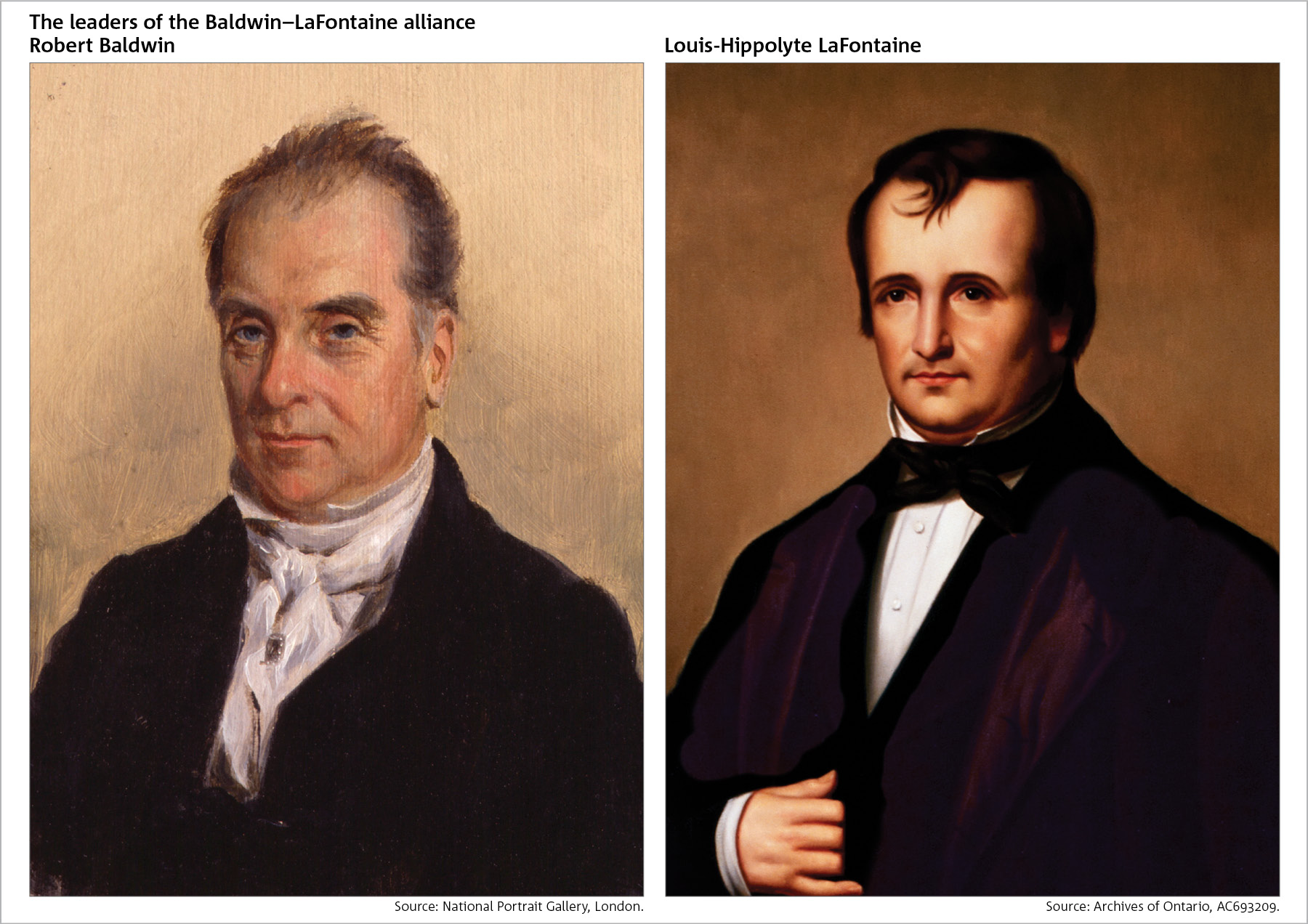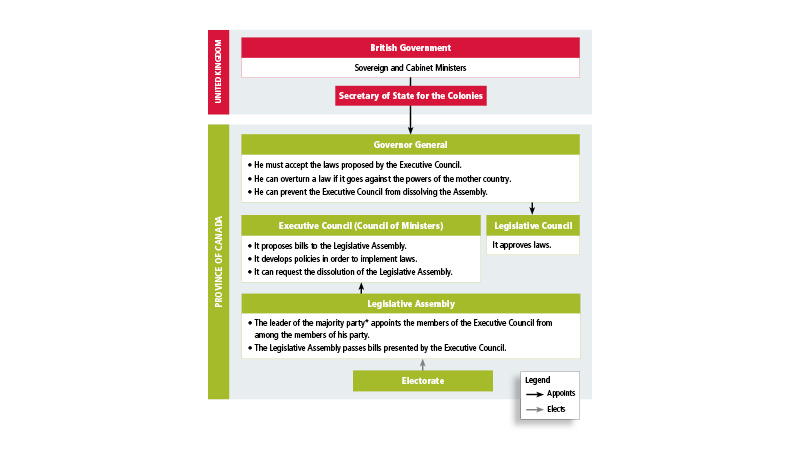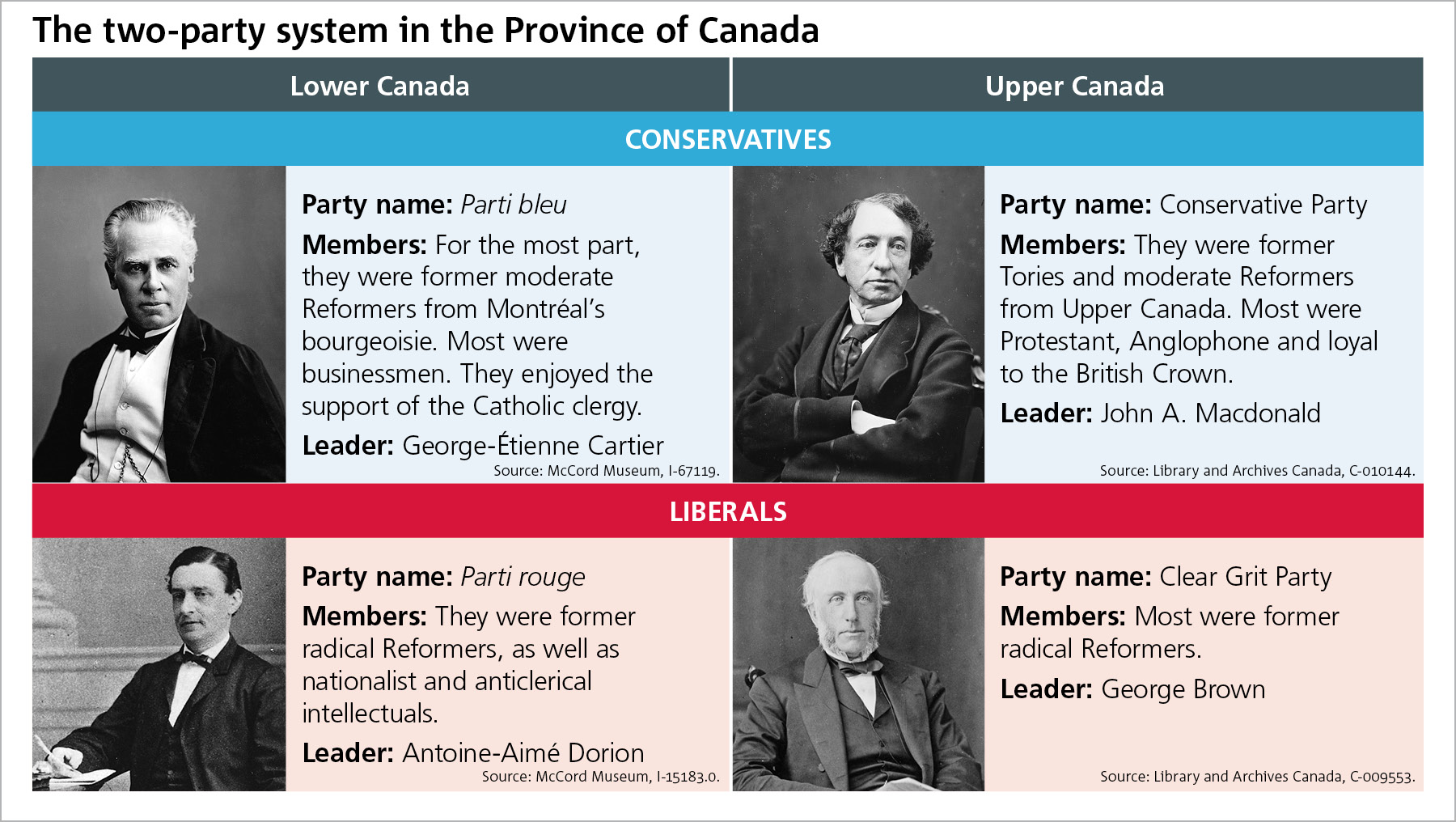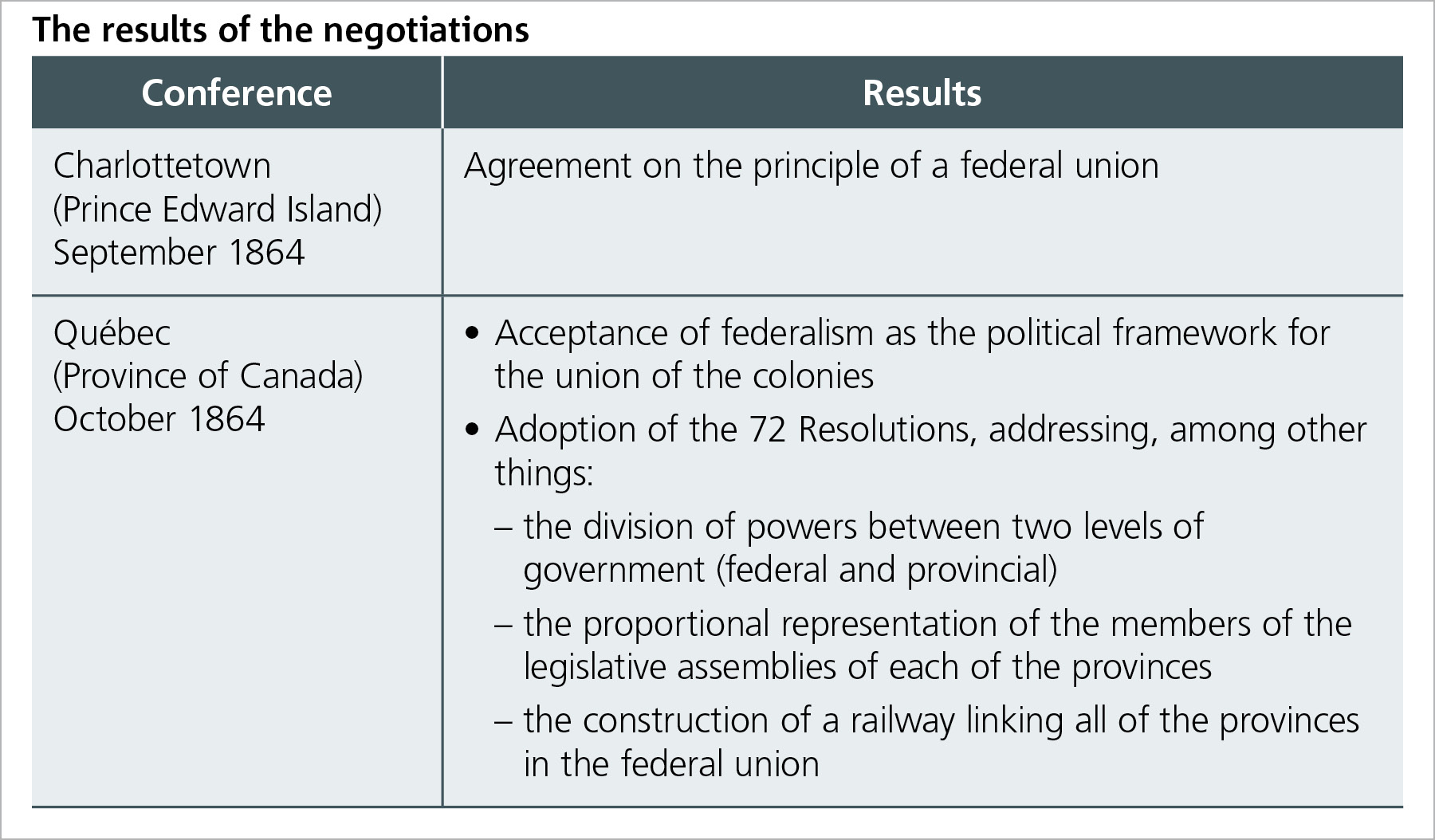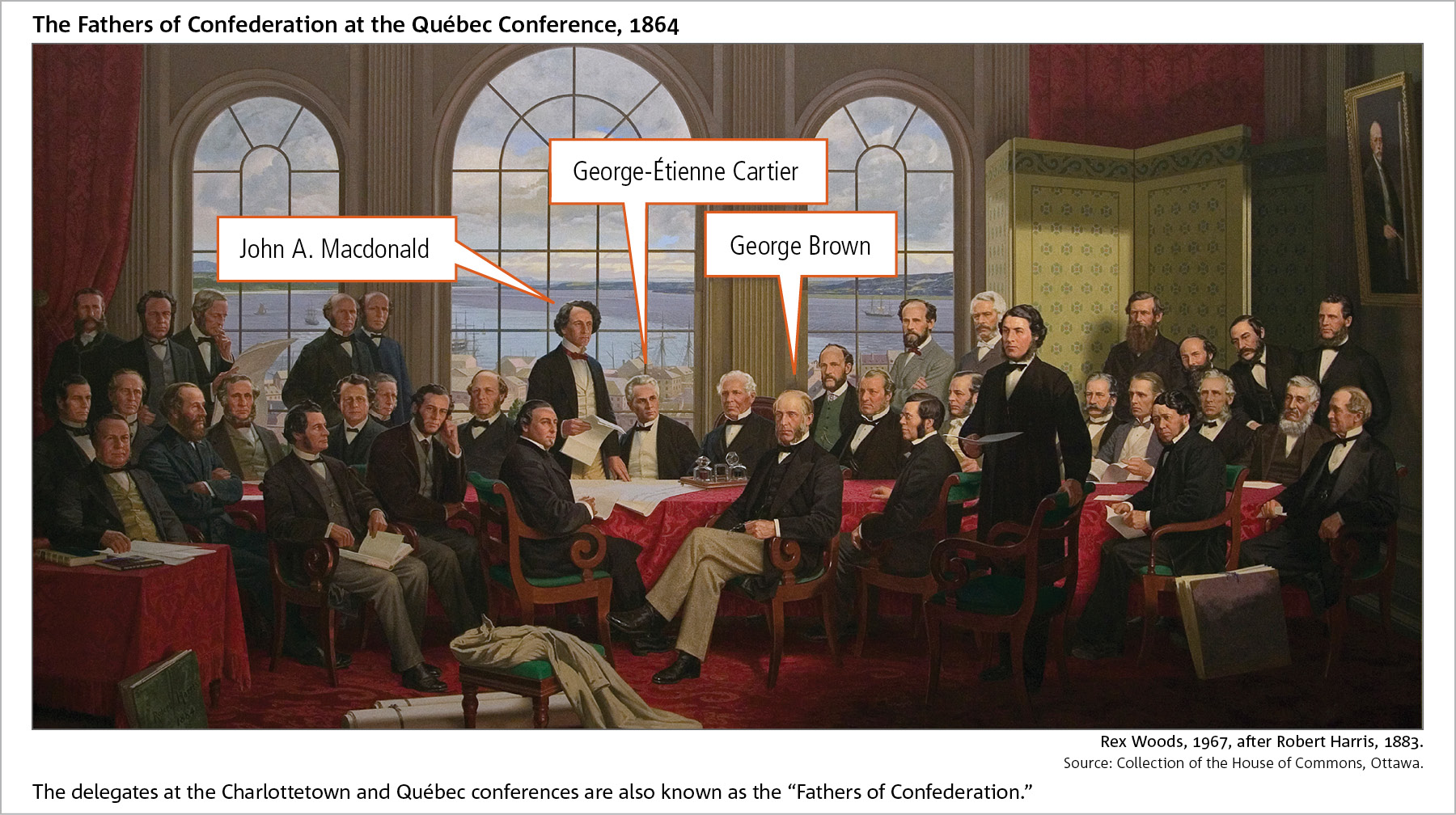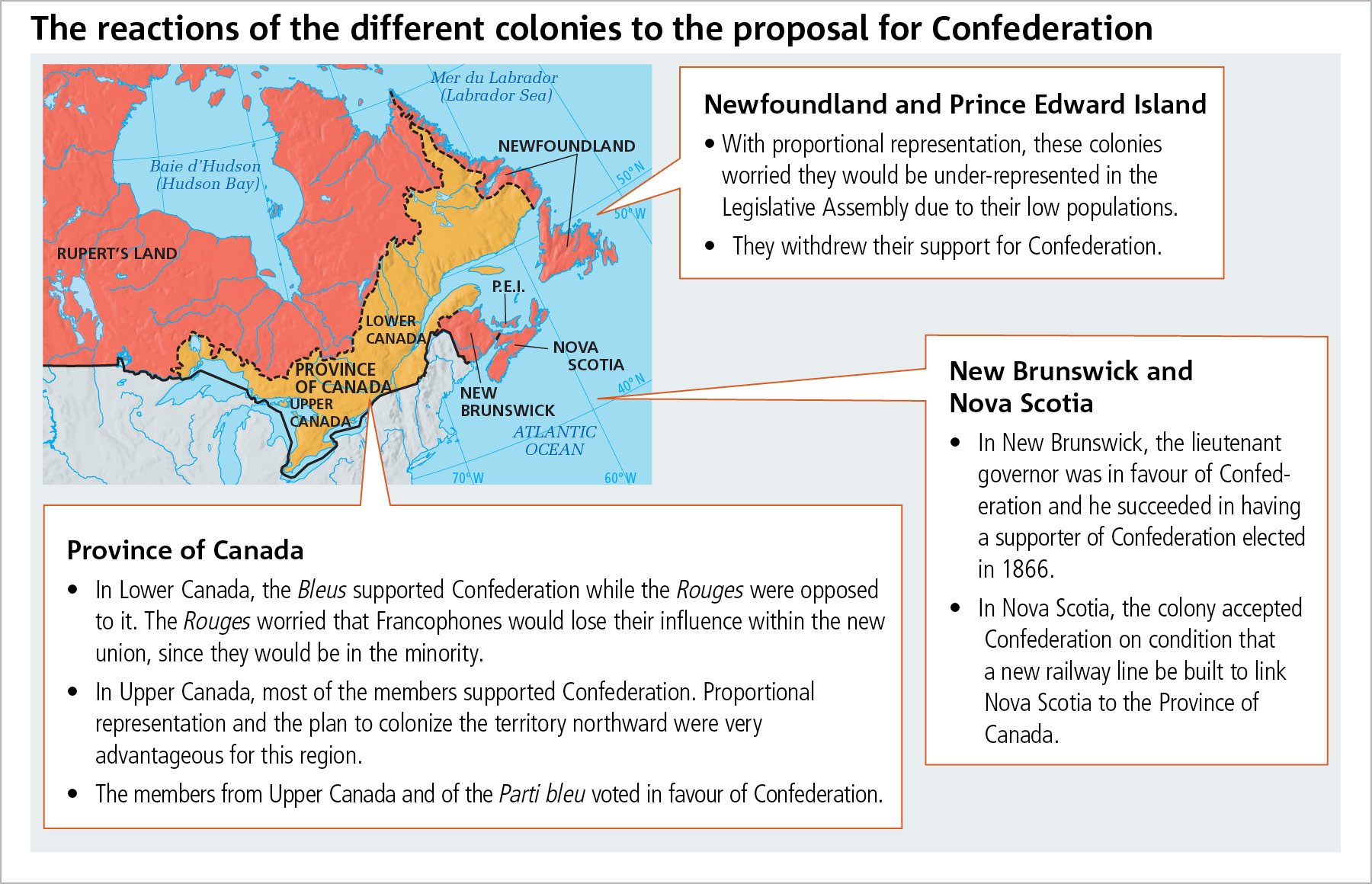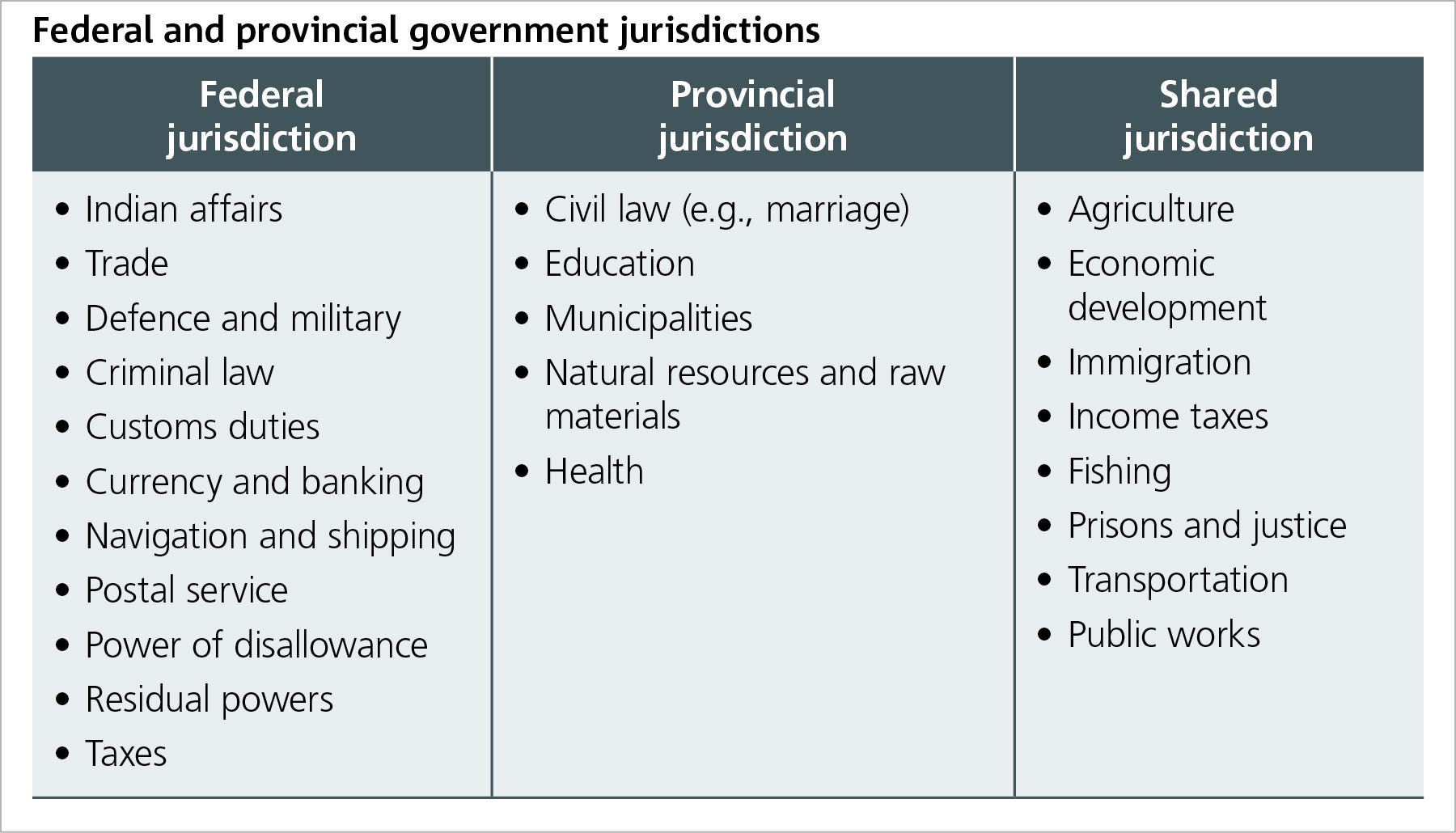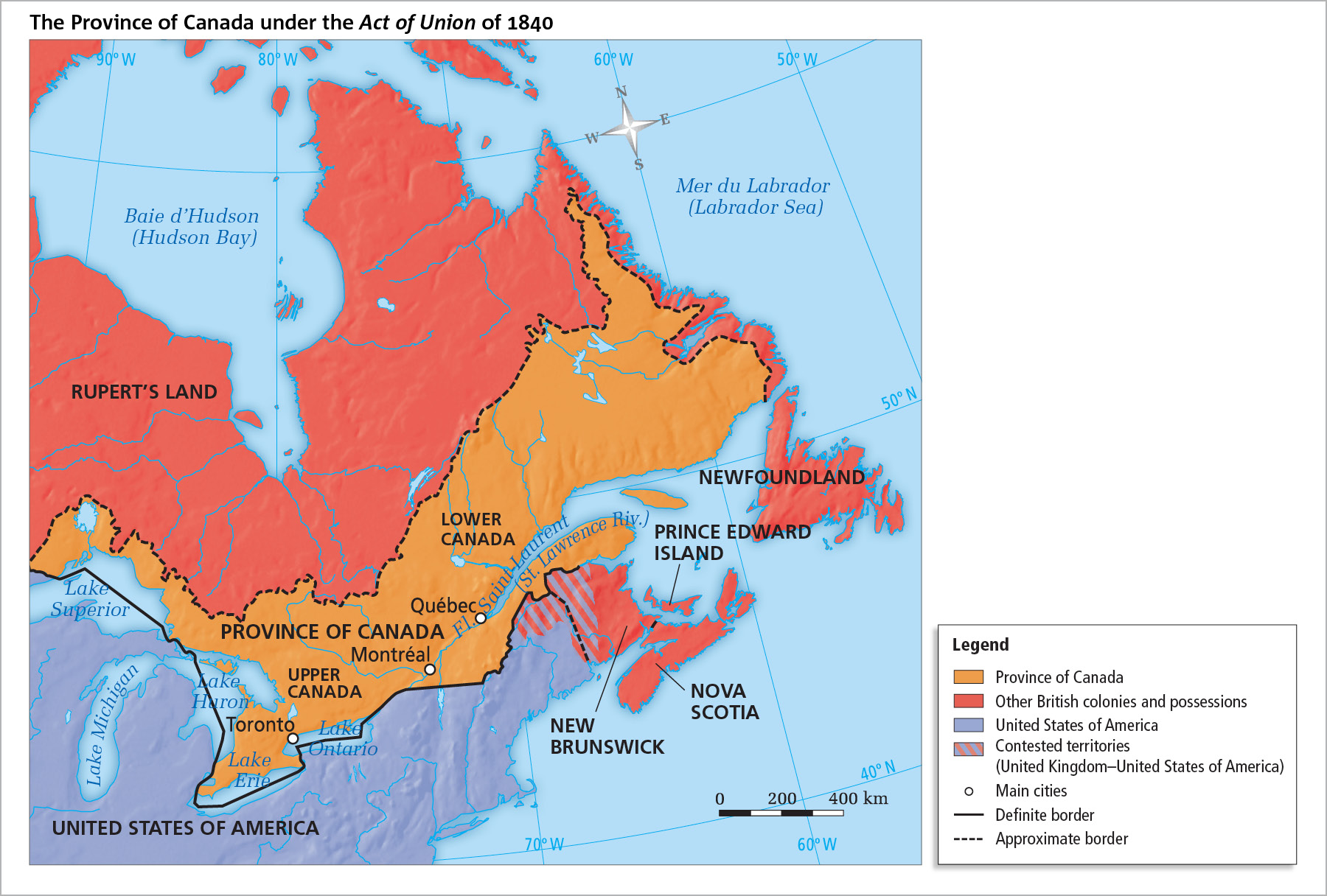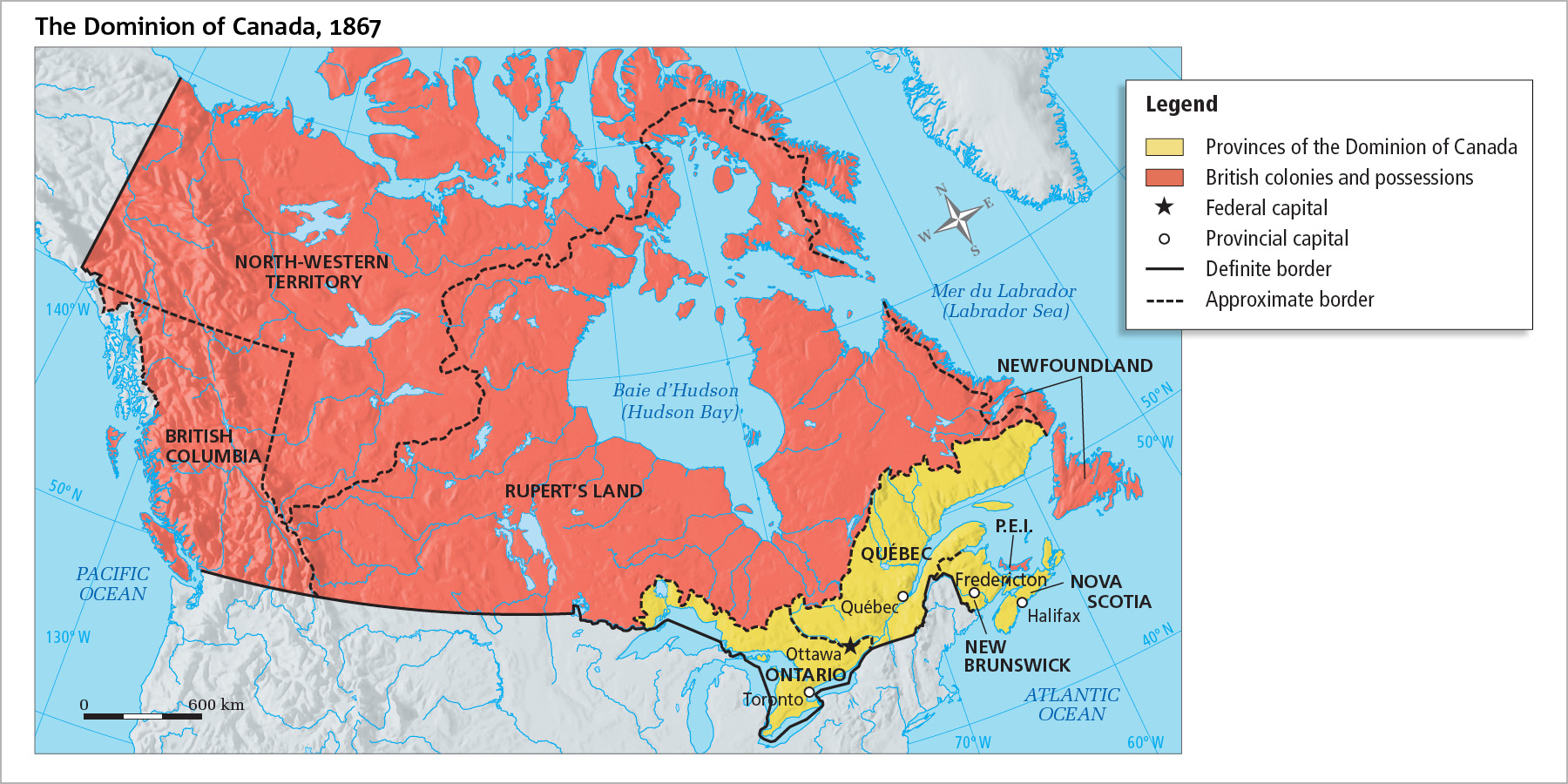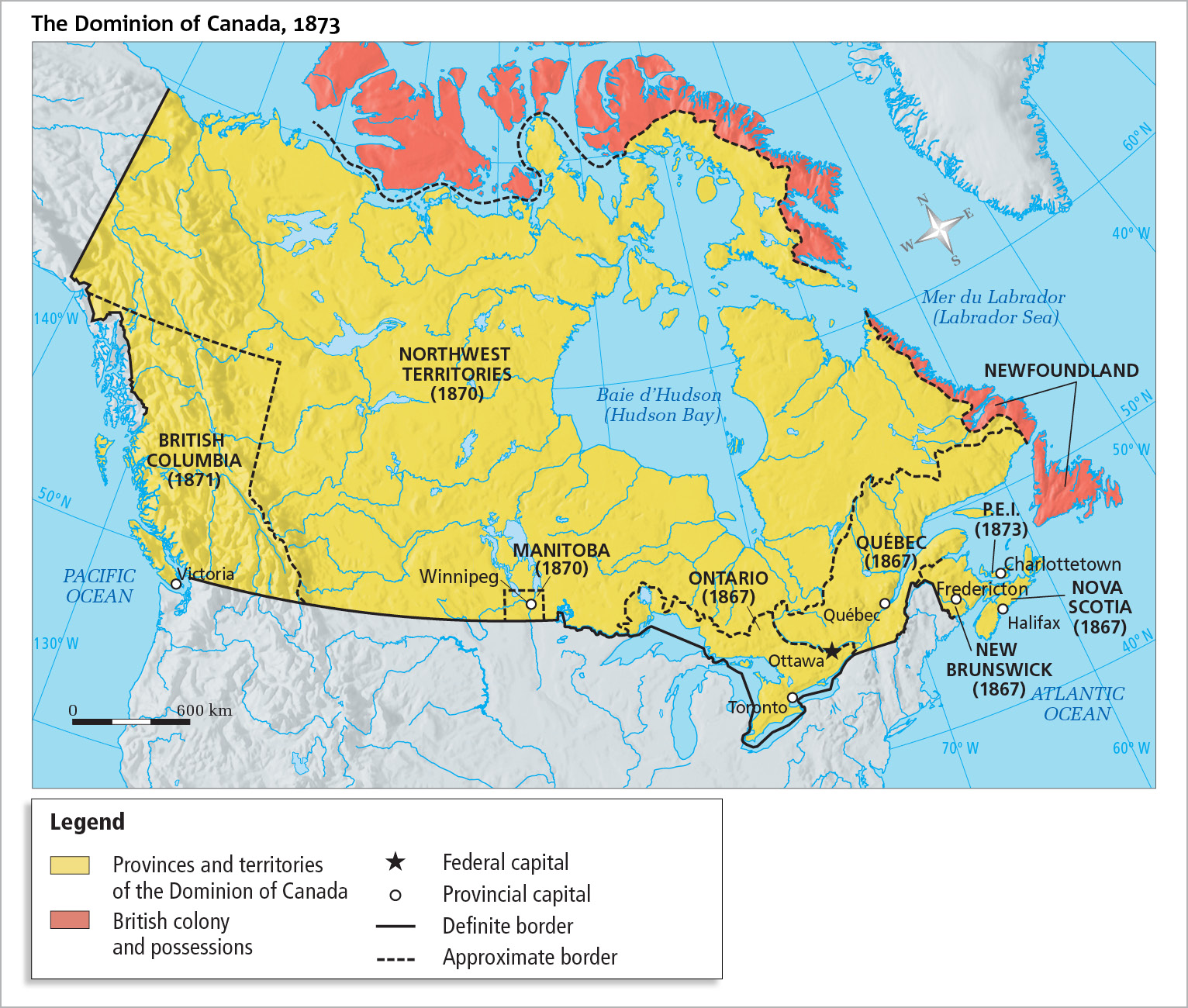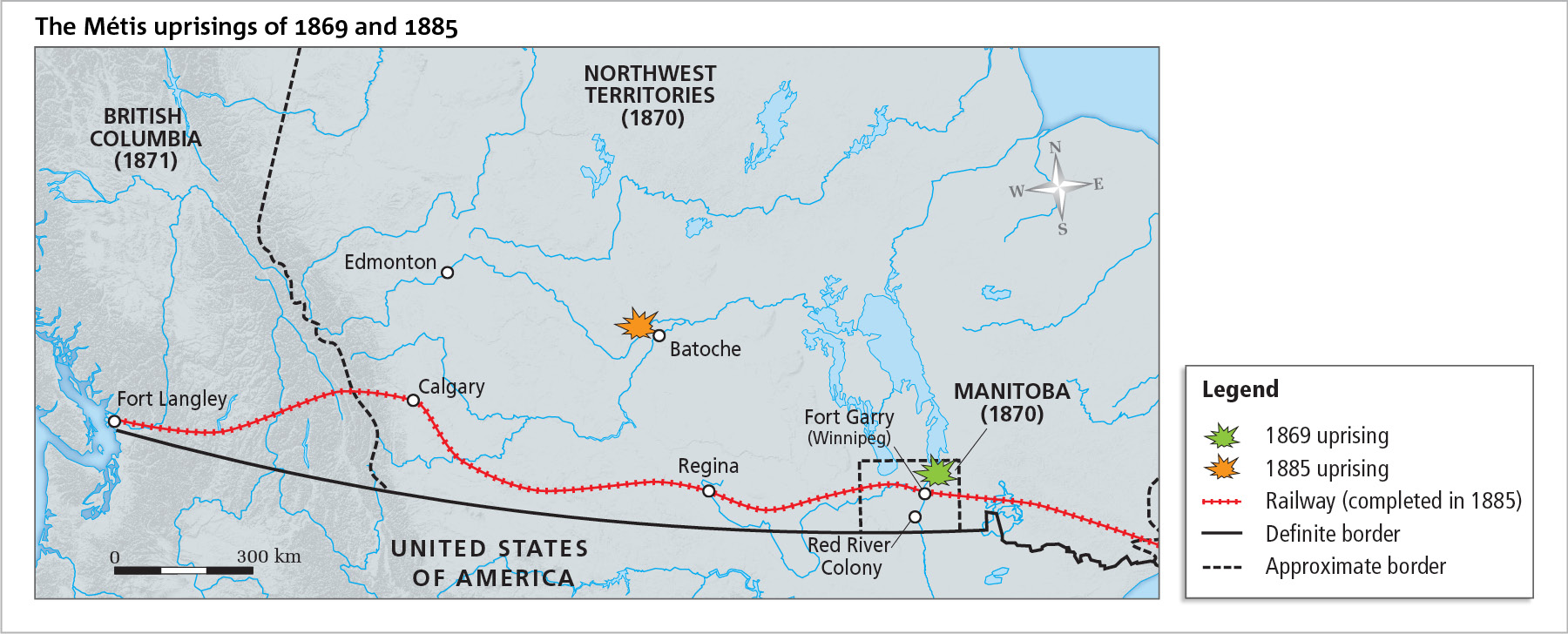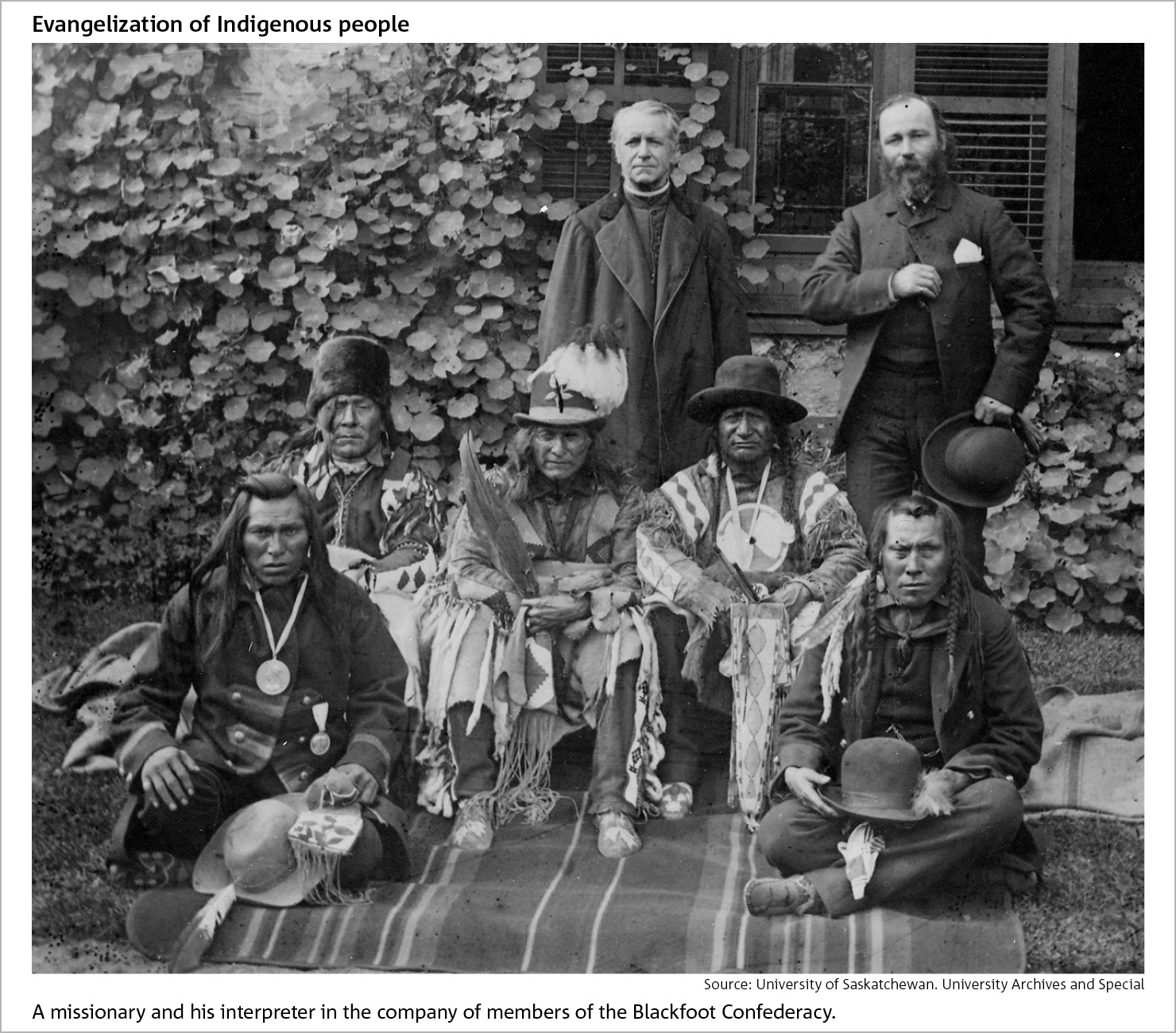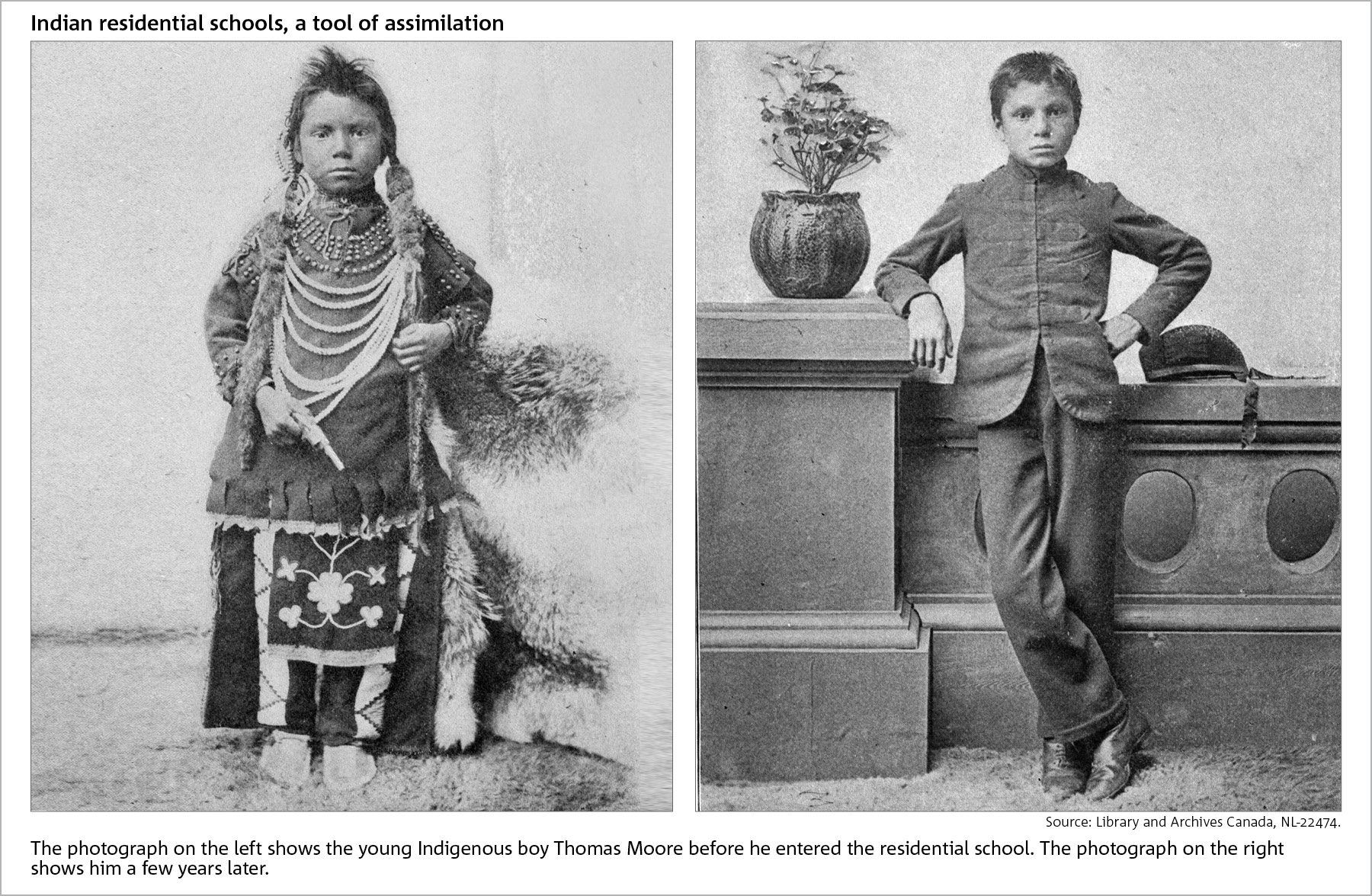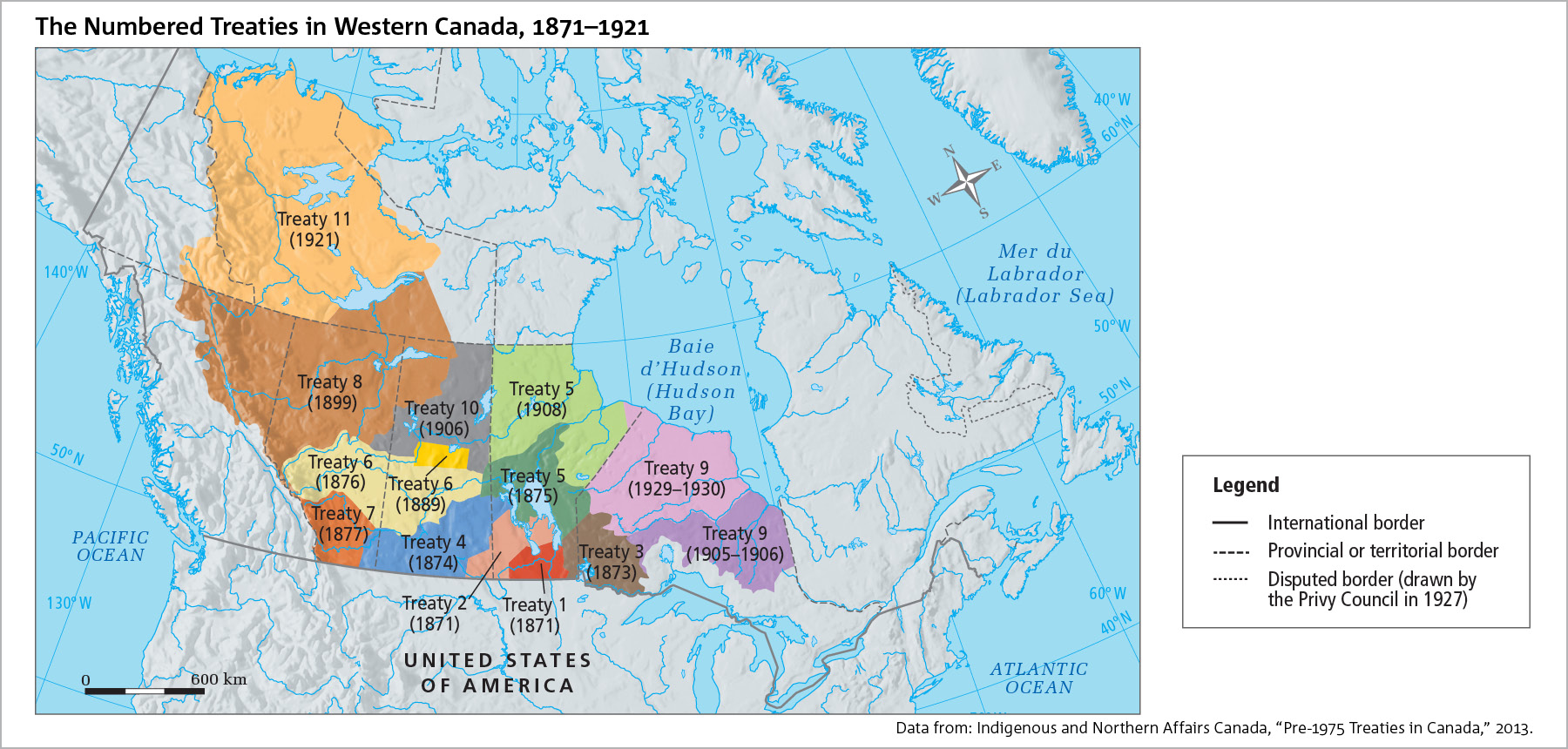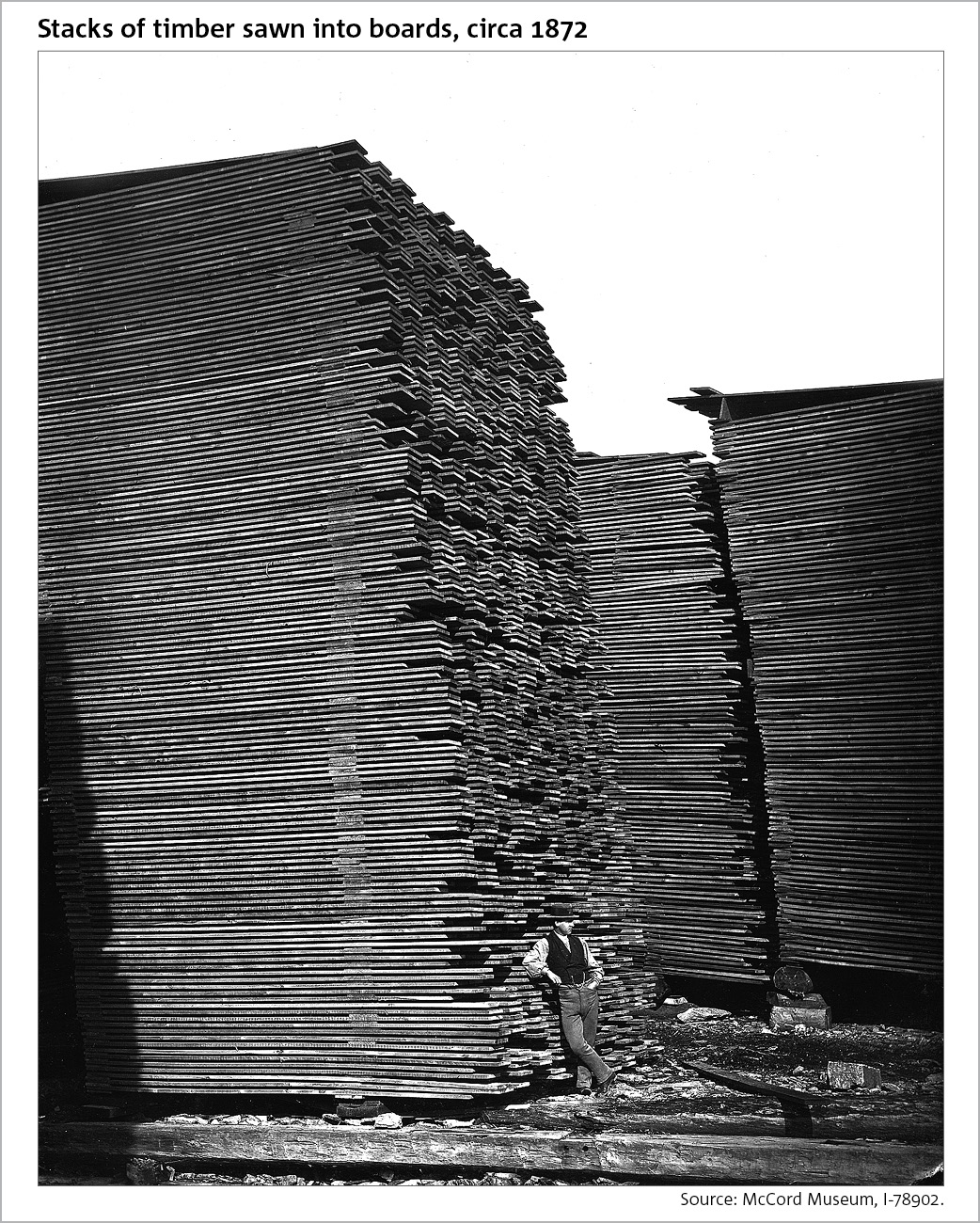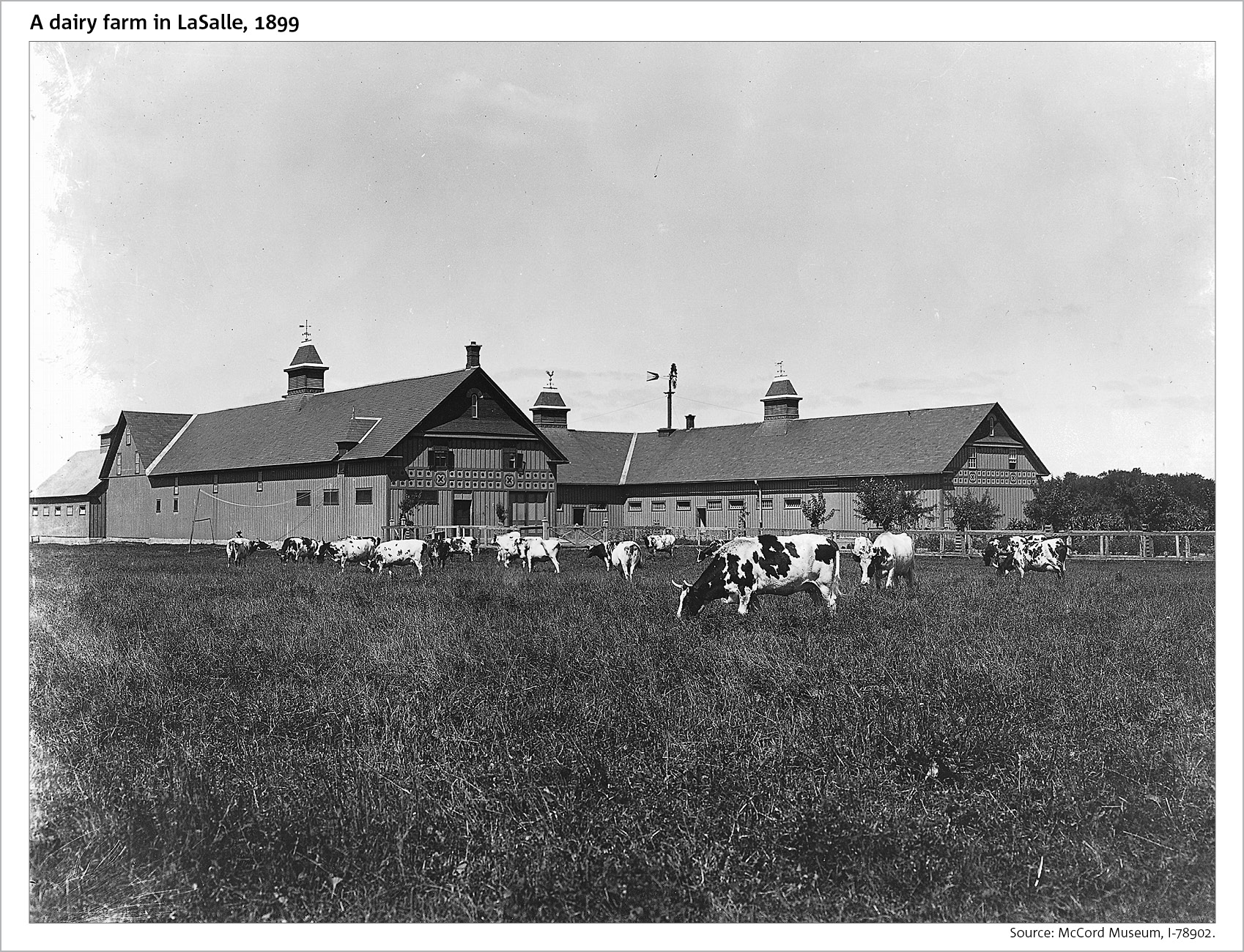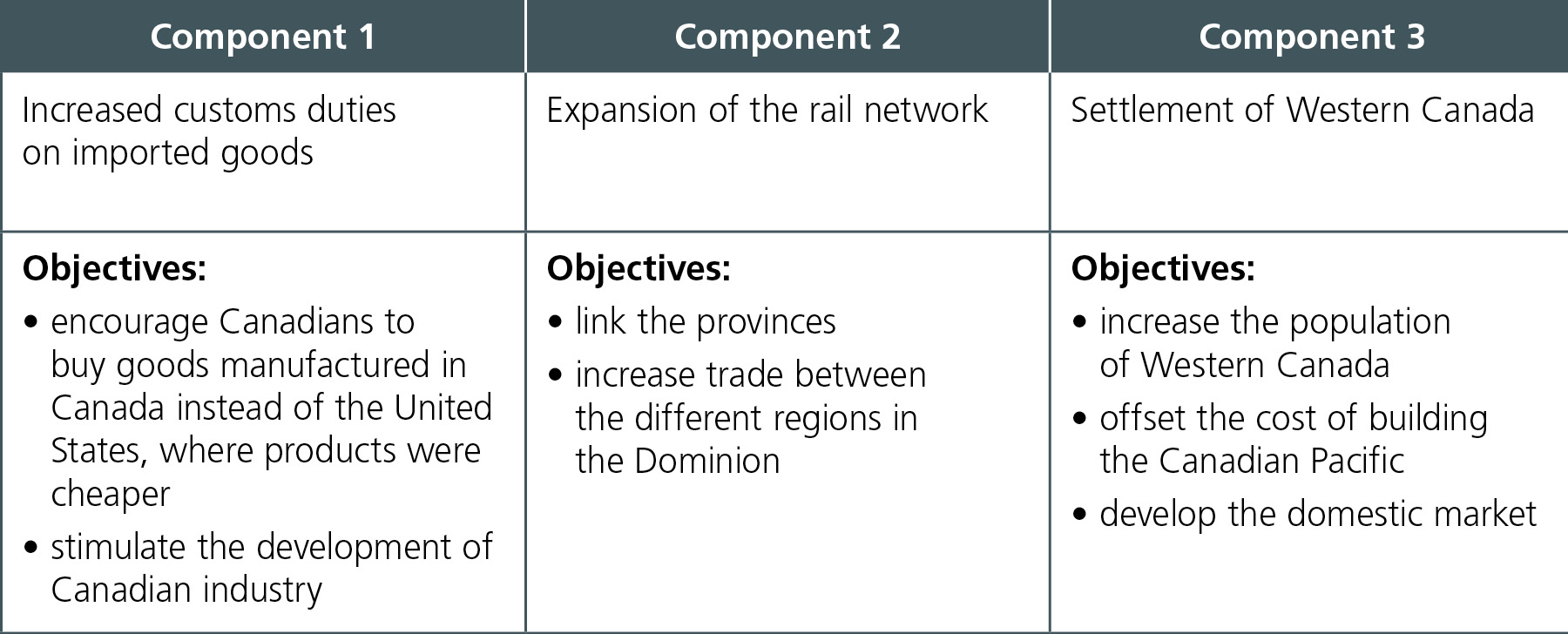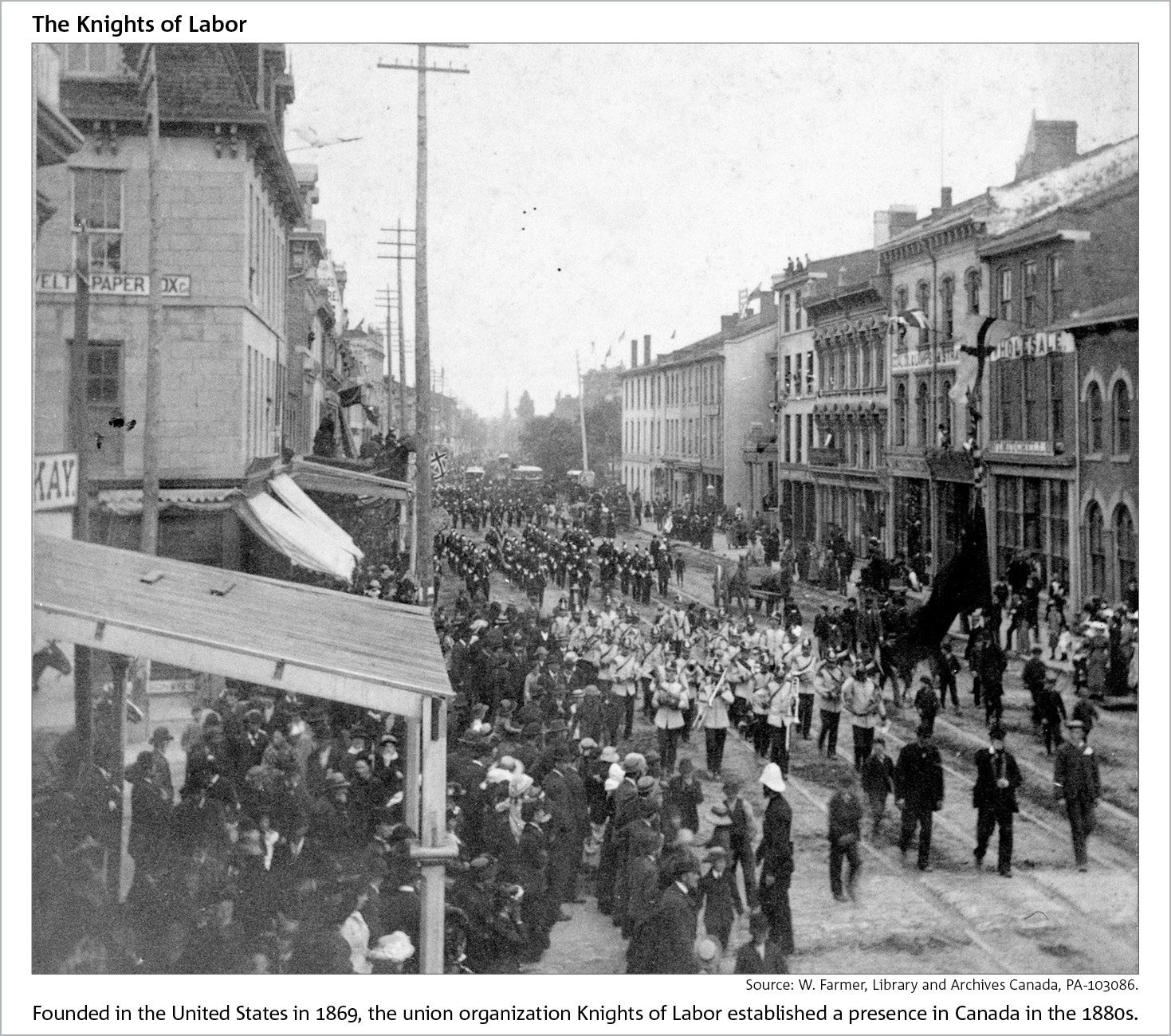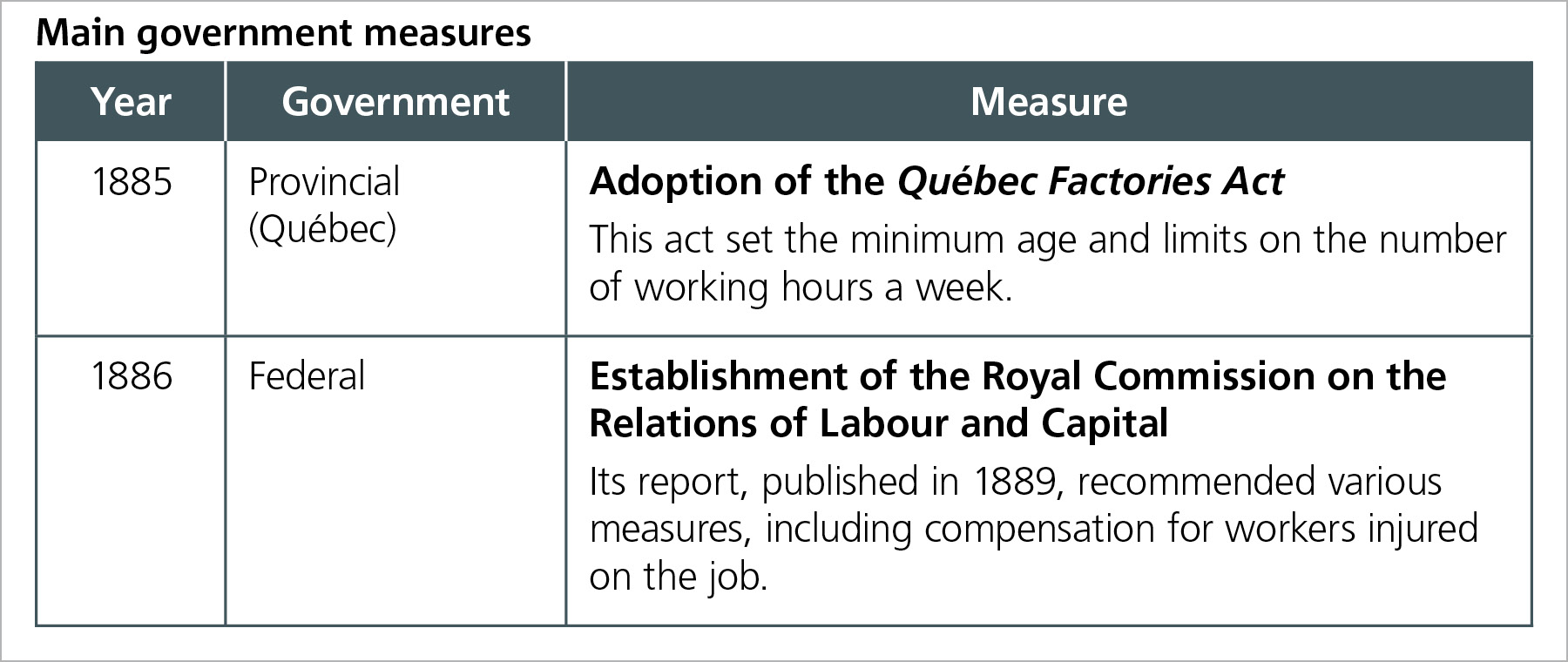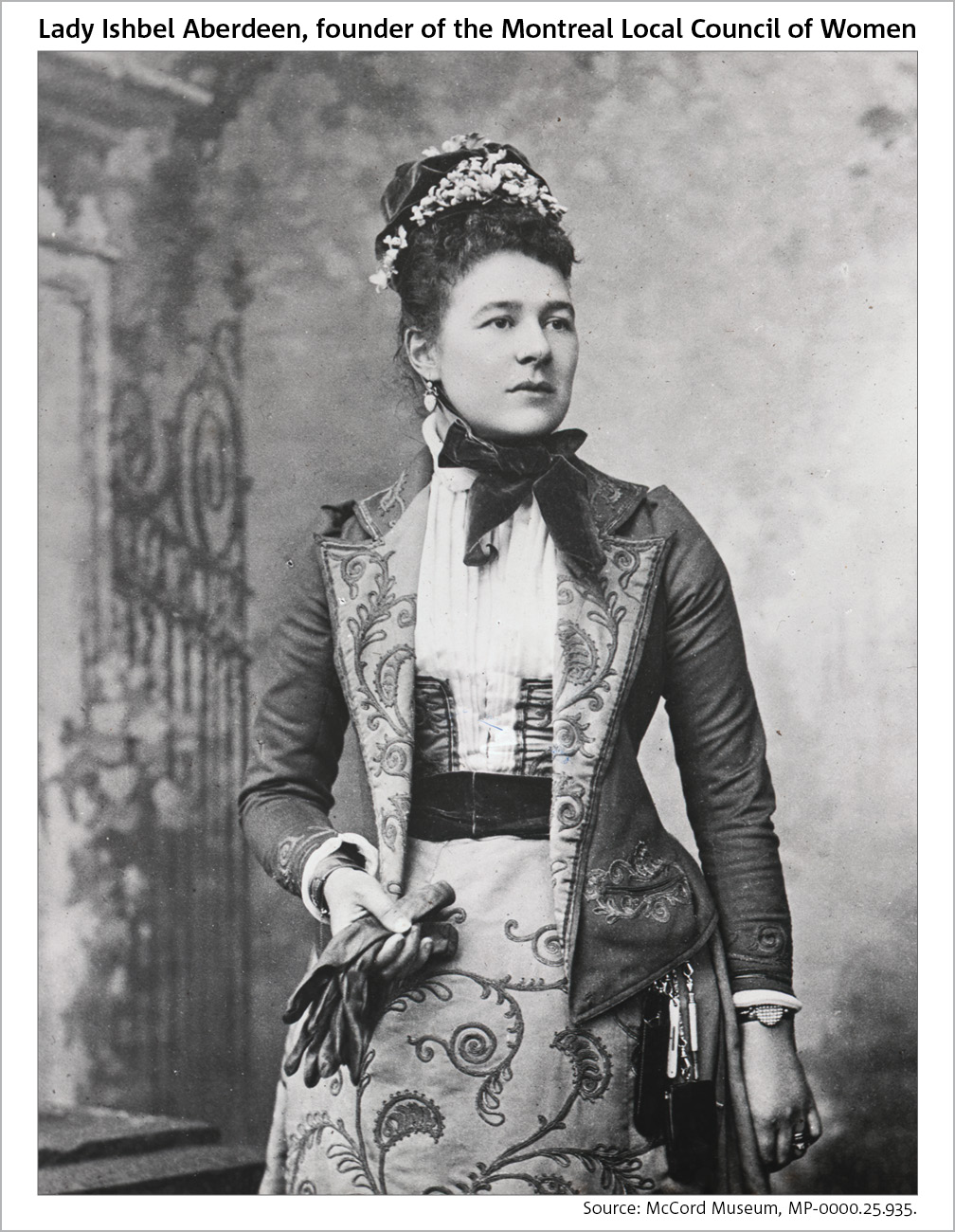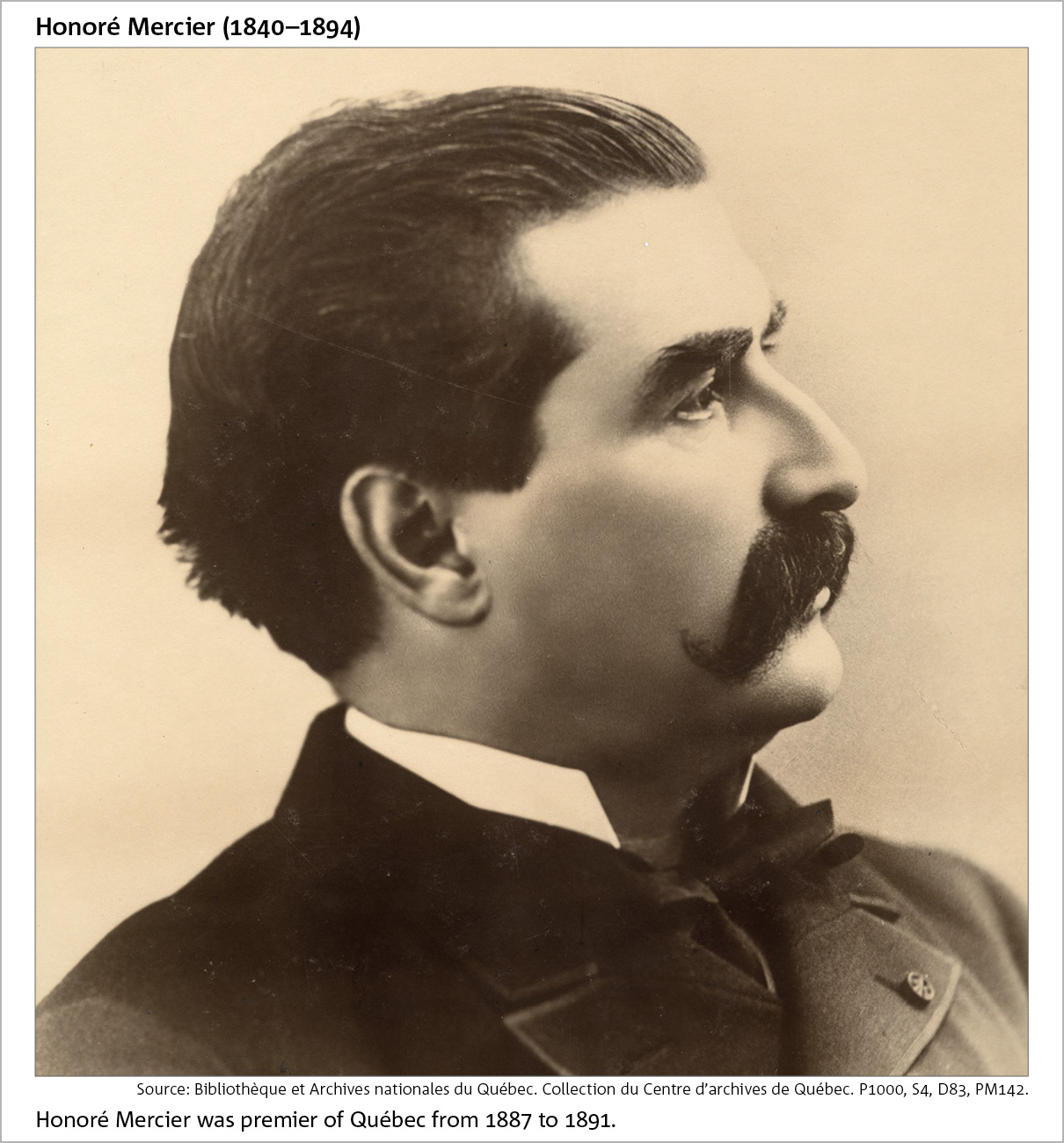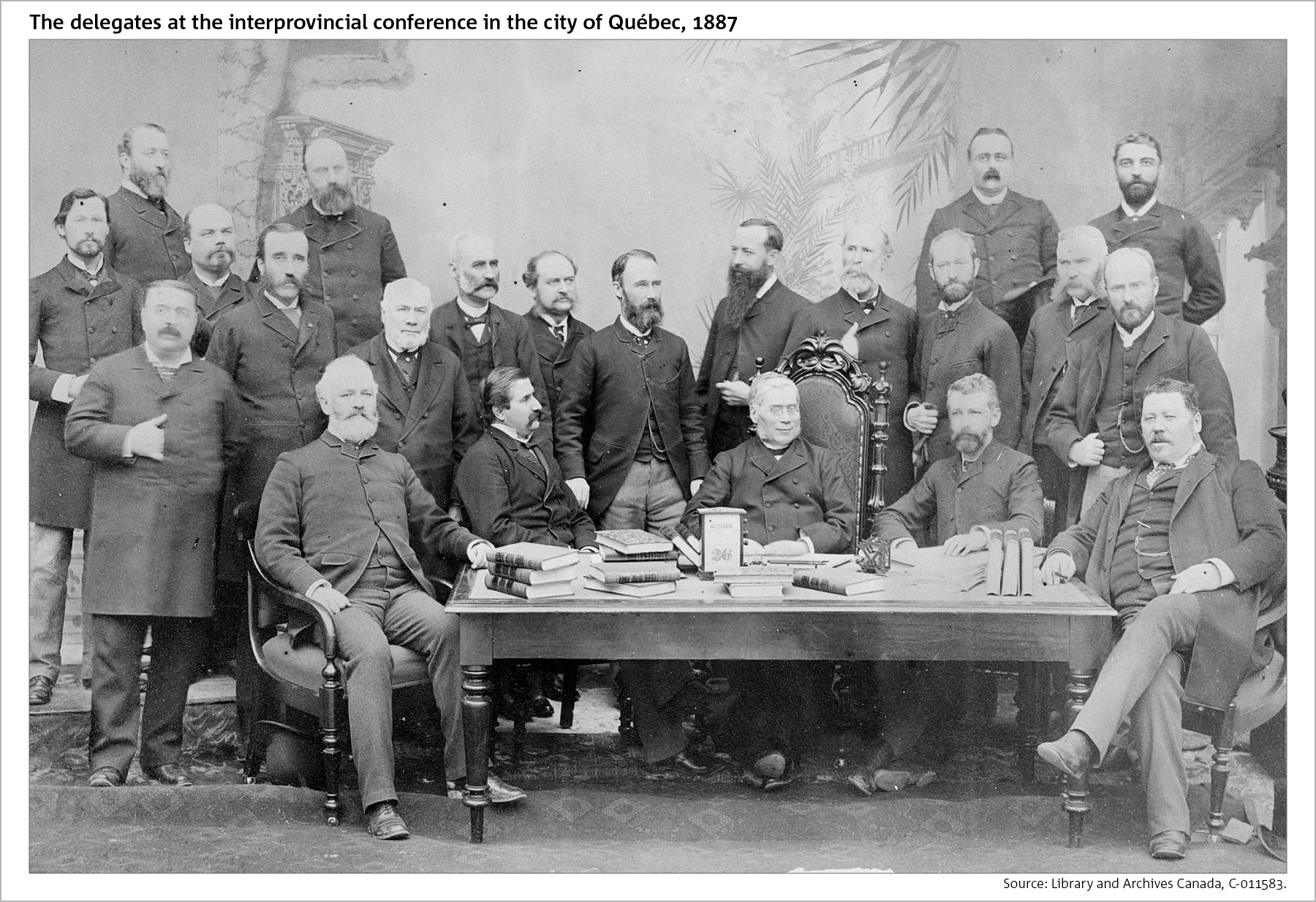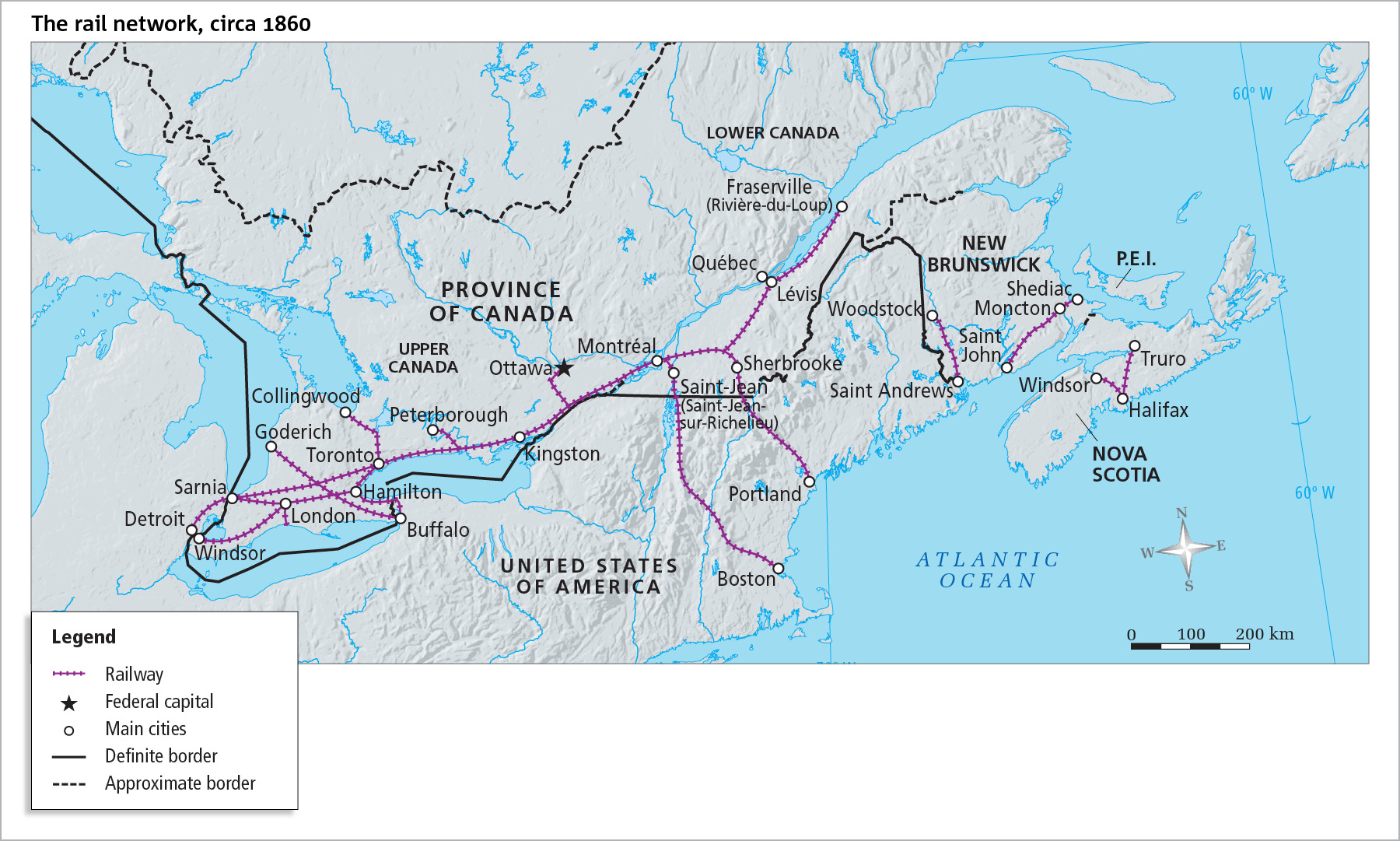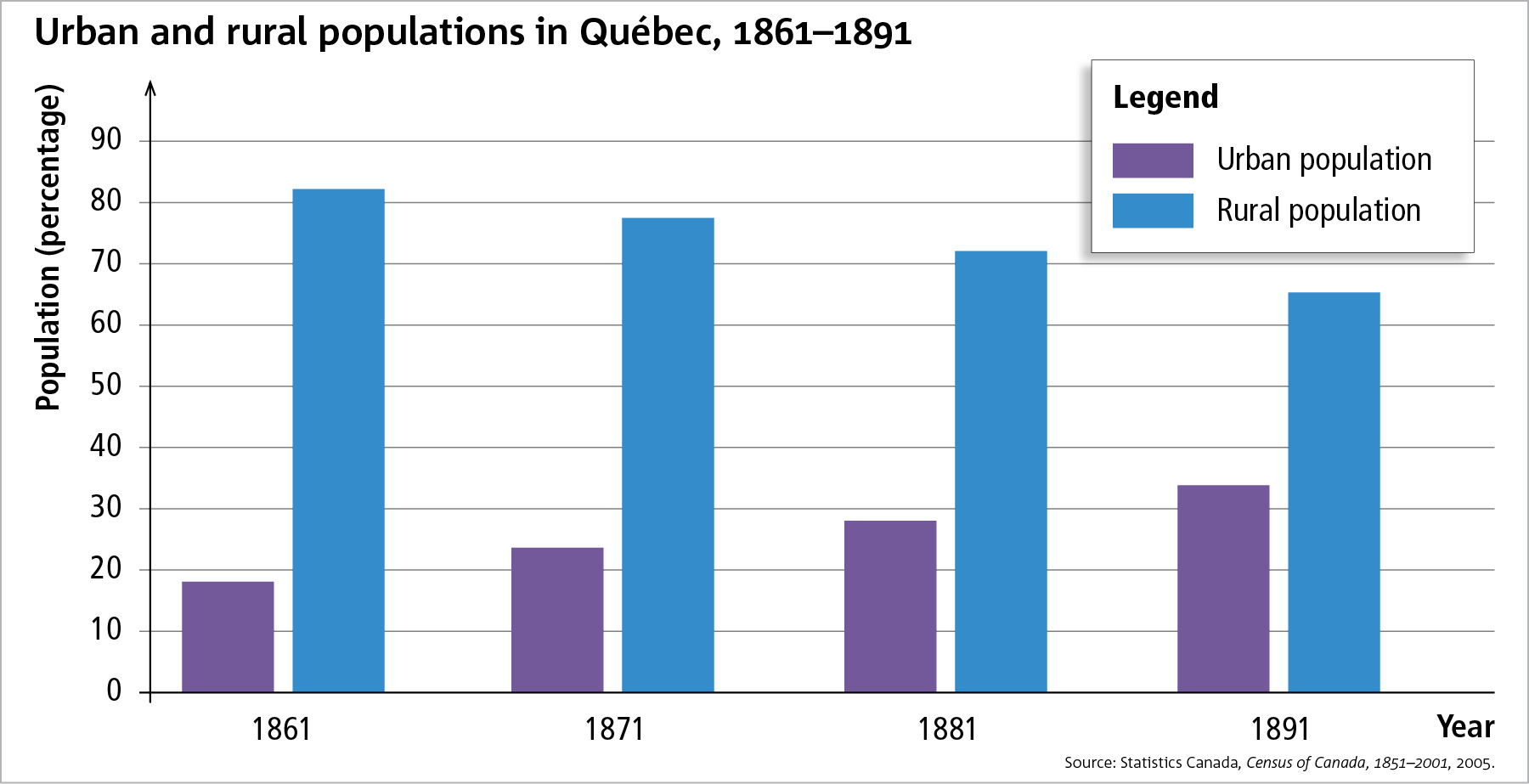Click on the different concepts to explore the content.
- The Act of Union of 1840 created the Province of Canada and put in place a single legislative assembly that brought together representatives of Upper Canada and Lower Canada.
- In 1848, London granted the Province of Canada responsible government.
- From 1854 to 1864, the two-party system and the constraint of a double majority created ministerial instability in the Province of Canada.
- In 1864, the Conservative (Macdonald and Cartier) and Liberal (Brown) leaders formed the Great Coalition in order to try to resolve ministerial instability. The Great Coalition proposed a union with the other British North American colonies.
- In 1864, the Charlottetown and Québec conferences were an opportunity for the representatives of several British North American colonies to agree on the principles of a federal union.
- In 1866, the representatives of the British colonies met in London to draft a bill and have it approved by the British Parliament.
- In 1867, London adopted the British North America Act (BNA Act), which became the first constitution of the Dominion of Canada.
- The Act of Union (1840) formed a new colony: the Province of Canada. This was divided into two regions: Lower Canada and Upper Canada.
- When it was created in 1867, the Dominion of Canada comprised four provinces: Ontario, Québec, New Brunswick and Nova Scotia. The Dominion expanded in the following years.
- In 1869, the Dominion of Canada purchased Rupert’s Land and the North-Western Territory from the Hudson’s Bay Company. The Northwest Territories, thus created, entered the Canadian federation in 1870. Three provinces joined the Dominion: Manitoba (1870), British Columbia (1871) and Prince Edward Island (1873).
- The expansion of Canada’s territory to the West led to the Métis uprisings, led by Louis Riel, in 1869 and 1885.
- The Numbered Treaties allowed Canada to acquire land in the West occupied by Indigenous peoples, who found themselves relocated to reserves and subject to the Indian Act of 1876.
- In Québec, new regions—such as the Saguenay, the Laurentides and the Outaouais—were opened up to colonization.
- As of 1846, the United Kingdom abandoned protectionism and adopted a free trade policy. This decision forced the British colonies to find new trade partners and develop a domestic market.
- From 1854 to 1866, the Province of Canada and the United States were bound by the Reciprocity Treaty, which facilitated trade between them.
- As of the 1850s, North America experienced the first phase of industrialization.
- The forestry industry continued to be the driving force of the Canadian economy, particularly with the development of the lumber industry.
- Canadian farmers diversified their crops. The dairy industry became the leading agricultural sector at the end of the 19th century.
- From 1873 to 1878, Canada faced a serious economic crisis, which Prime Minister John A. Macdonald tried to resolve by adopting the National Policy in 1879.
- Industrialization transformed society. It caused population movements and created a new social class: the working class.
- Workers’ living and working conditions were very difficult. The desire to improve the lives of the working class led to the beginning of unionism and the emergence of social reformism, to which many women contributed.
- The Catholic Church played an important role in Québec society. It ran hospitals, schools and charitable organizations.
- Ultramontanism was a dominant ideology in Québec in the second half of the 19th century. It inspired a form of nationalism based on traditional values, known as a nationalism of survival.
- In response to the powerful influence of ultramontanism, some defended anticlericalism, a position adopted by the members of the Institut canadien.
- In the second half of the 19th century, many literary works were inspired by a nationalism of survival. They formed what was called patriotic literature.
- The École littéraire de Montréal was founded in 1895. Its members advocated a free style of writing, without any imposed themes.
- The Dominion of Canada adopted federalism as its political system. Power was divided between two levels of government: a federal government (central government) and provincial governments.
- The distribution of power between the two levels of government established by the BNA Act favoured the federal government.
- In 1887, Honoré Mercier organized the first interprovincial conference to defend the autonomy of the provinces.
- The first phase of industrialization (around 1850–1896) was marked by the mechanization and division of labour: in factories, workers usually performed the same simple and repetitive task on the assembly line.
- The business class possessed the capital and the means of production. Its members became wealthy through the work of the labourers they hired, and they then reinvested their profits. This system is called industrial capitalism.
- The main sectors that experienced growth during this first phase of industrialization were food, textiles, lumber, iron and steel.
- The development of the rail network was a key factor in this first phase of industrialization. It enabled the transportation of raw materials and goods, and linked the provinces in order to create a domestic market.
- Industrialization led to urbanization and the displacement of populations to cities, where most of the factories were situated.
- Many French Canadians emigrated to industrial cities in the United States. The Québec government and the Catholic clergy attempted to slow emigration with the development of new regions of colonization.
- The Macdonald government implemented measures to attract immigrants to the West.
- Immigration from the British Isles remained high in the last decades of the 19th century.

